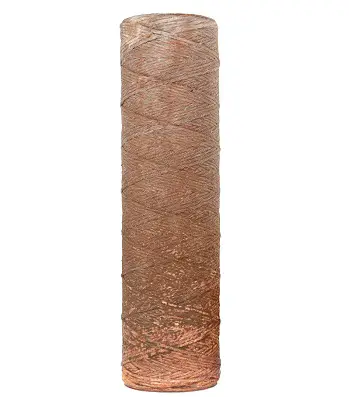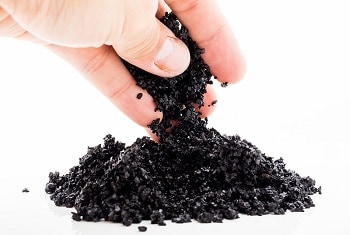UPDATED: January 22, 2023
Your reverse osmosis system provides you with great-tasting water and it seems to be working fine. You know that it has been a while since you have changed the filters in it but that’s no big deal, or is it? What happens if you don’t change your reverse osmosis filters?
Not changing your reverse osmosis filters often enough can lead to your reverse osmosis system producing poor-quality water because a clogged pre-filter may not allow for proper water pressure for the membrane to filter properly and a carbon filter may lose its ability to remove chemicals.
No filter can remove impurities for an unlimited amount of time. Some types of filters can be cleaned and others need to be replaced. Because a reverse osmosis system filters out very tiny particles, the filters need to be replaced regularly for your reverse osmosis system to continue to produce purified drinking water.
A water filter can’t filter out impurities forever.
We use reverse osmosis systems to remove impurities from our water to make it healthier and more enjoyable to drink.
How Does Reverse Osmosis Work? And Will It Benefit You!
A reverse osmosis system uses filters to capture and hold impurities from our water so your water comes out of the reverse osmosis system cleaner and purer than when it went into the system.
Because the filters are holding on to the impurities from your water, they will need to be changed once they are no longer able to hold any more impurities from your water.
The most obvious evidence of this is the reverse osmosis pre-filter.
The pre-filter of a reverse osmosis system is there to remove larger particles and debris from your water and therefore it is easy to see why a reverse osmosis sediment pre-filter can affect the flow of water through your reverse osmosis system.

At some point, dirt and debris that gets trapped inside of a reverse osmosis sediment pre-filter can work their way through the filter and end up clogging your reverse osmosis membrane.
When debris gets trapped in a water-sediment pre-filter it can wear away the pores or expand the weave of the fibers of the filter which can over time allow sediment and debris to get through the filter.
Changing your reverse osmosis sediment frequently enough will keep debris from getting lodged in your reverse osmosis membrane which will allow your reverse osmosis system to provide you with better-quality drinking water.
A clogged sediment pre-filter can also cause your reverse osmosis system to produce less water because there is not enough pressure to fully expand the water bladder in your storage tank and therefore less water can be stored in it.
Your reverse osmosis system will not get enough water pressure to function correctly.
The process of reverse osmosis forces pure water through a filtering membrane while rejecting water that contains unwanted impurities.

Sufficient water pressure is required in order to force the water through the membrane. If the water pressure is reduced because of a clogged pre-filter, the water may simply get rejected rather than forced through the membrane to produce filtered water.
Water pressure is also important to the function of the reverse osmosis membrane itself.
A reverse osmosis membrane actually works better when it has sufficient water pressure surrounding it. The water pressure causes the mesh of the membrane to constrict which reduces the size of the pores that allow water to pass through, which means that the membrane will reject smaller impurities than it would if the water pressure is too low.
You could be drinking chemicals that your carbon filter can no longer remove.
The primary purpose of having a reverse osmosis system is to remove impurities like chemicals from your water, right?
Well, the way that many chemicals are removed from your water by a reverse osmosis system is because it contains one or more carbon filters.
Carbon removes chemicals from your water by capturing them in its pores and crevasses. You can visualize the surface of carbon as looking a little like a sponge with little holes all over it.

These little holes are where particles and chemicals get trapped and removed from your water. But eventually, all of the holes will be filled with particles which means that the carbon will not be able to remove any more particles.
If you don’t change your reverse osmosis carbon filters often enough, they may become loaded with particles to the point where particles and chemicals will simply pass through the carbon filter and possibly end up in the water that you are drinking.
Your water may not taste as pure as it used to.
Naturally, if the filters of your reverse osmosis system are not filtering as well as they should, your water will not be as pure.
Using your reverse osmosis filters for too long will diminish their ability to remove impurities which may lead to poor-tasting water so why would you want to want to postpone changing your filters when you purchased a reverse osmosis system to enjoy great-tasting drinking water?
You could be causing damage to your reverse osmosis membrane.
The whole idea of having one or more water pre-filters on a reverse osmosis system is to protect the system’s reverse osmosis membrane.
A reverse osmosis membrane has a very fragile surface that can easily be damaged by sediment in your water, chemicals like chlorine that are very common in municipal water, and even the oils in your skin which is why you should never handle a reverse osmosis membrane without wearing protective gloves.
Chlorine, oil from your skin, and chemicals can corrode or dissolve the surface of a reverse osmosis membrane which will allow large particles to pass through the membrane which can make the membrane ineffective.
Sediment in your water will clog and physically wear away at the surface of a reverse osmosis membrane.
The sediment pre-filter of a reverse osmosis system is very important to protect the reverse osmosis membrane and should be changed regularly.
Bacteria could be growing inside your reverse osmosis system.
Bacteria may not be a problem in your water, but if you don’t change your reverse osmosis filters often enough, you could have bacteria growing inside of your reverse osmosis system.
Bacteria can grow inside the plumbing in your home and also inside your home’s water appliances. Because the filters in your reverse osmosis system trap impurities in them, it creates a possible beginning of the growth of bacteria.
That is why I highly recommend that you change your reverse osmosis filters regularly and sanitize your reverse osmosis system every time that you change your filters. It is not very hard to do, and will greatly help to reduce the possibility of bacteria growing inside your reverse osmosis system.
It is really very simple, a reverse osmosis system uses filters to purify your drinking water and these filters are not effective forever. Be sure to change your reverse osmosis filters as recommended by the manufacturer and sanitize the inside of your system each time you change the filters.
Take good care of your reverse osmosis system and it will provide you with high-quality drinking water for many years. If you don’t change your reverse osmosis filters, you will not be getting the quality drinking water that the system is designed to provide.


